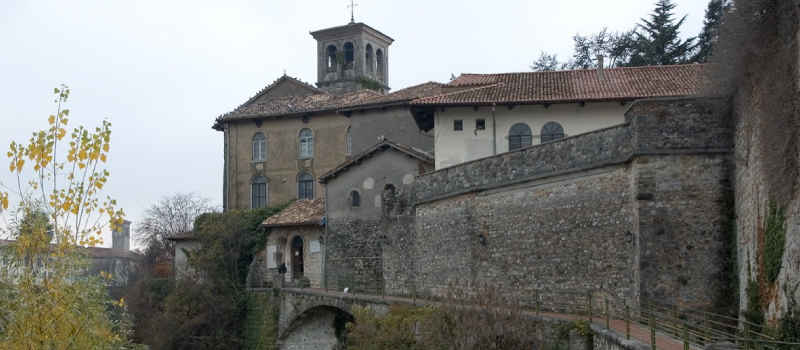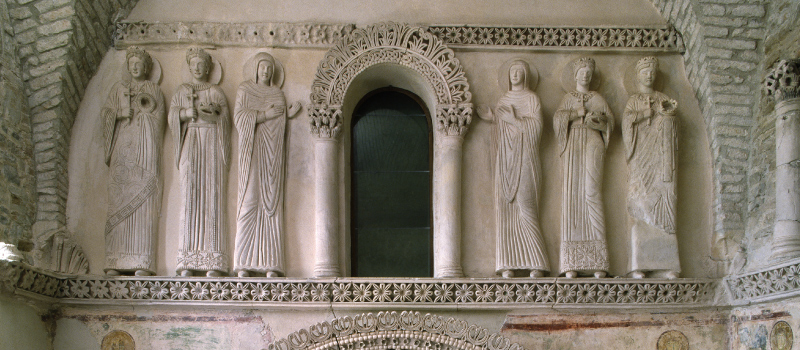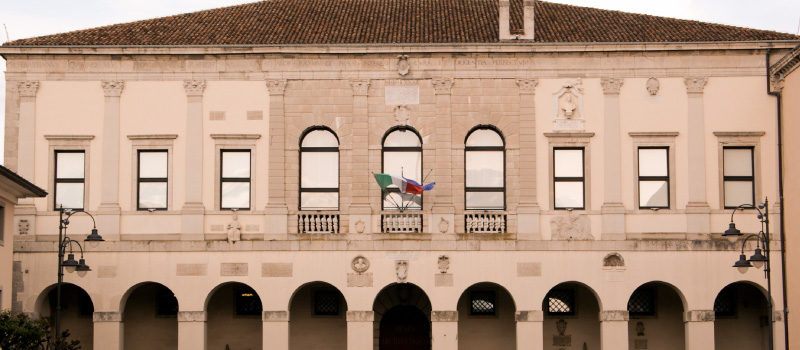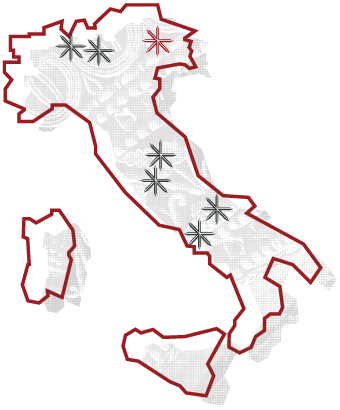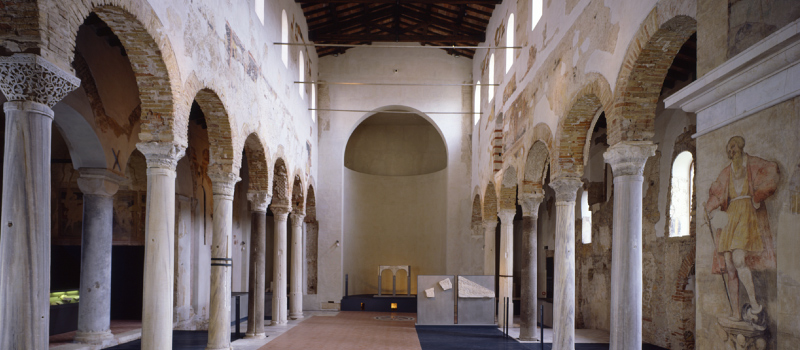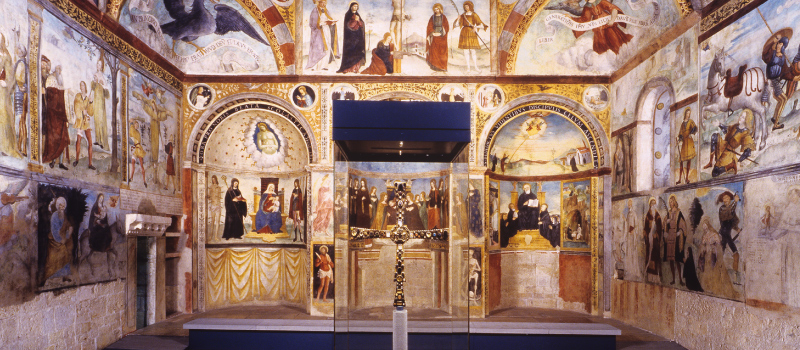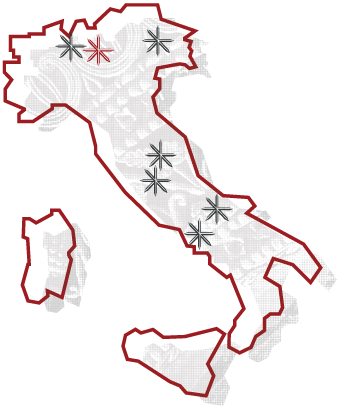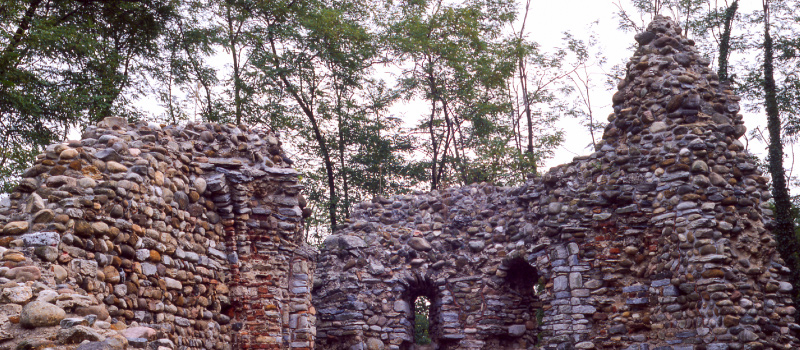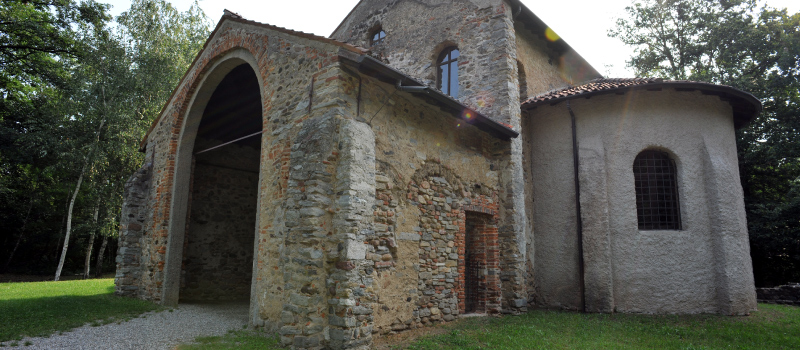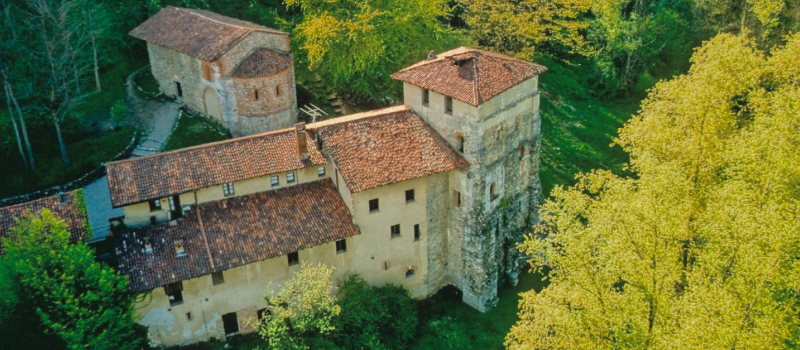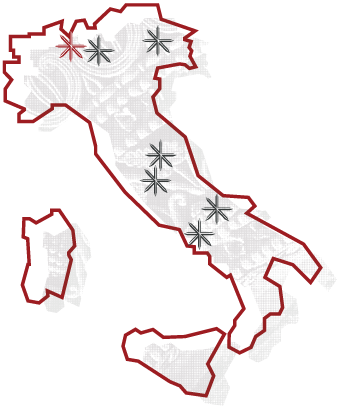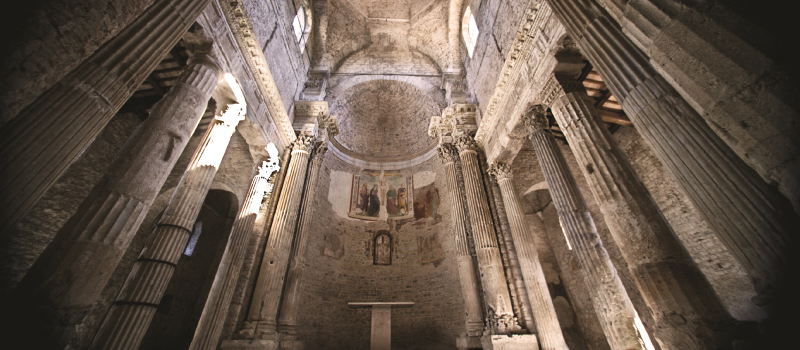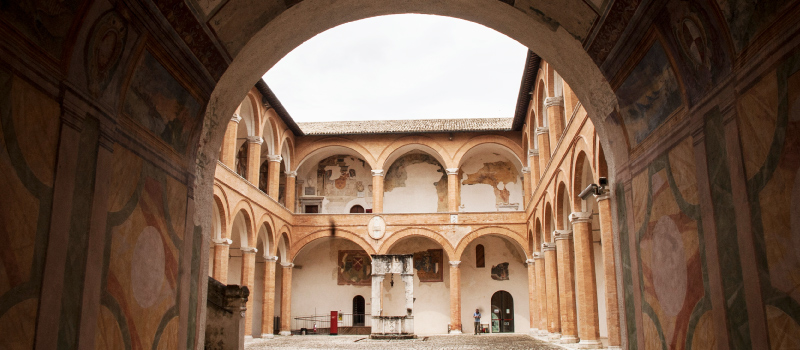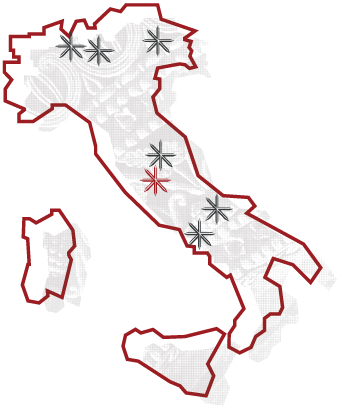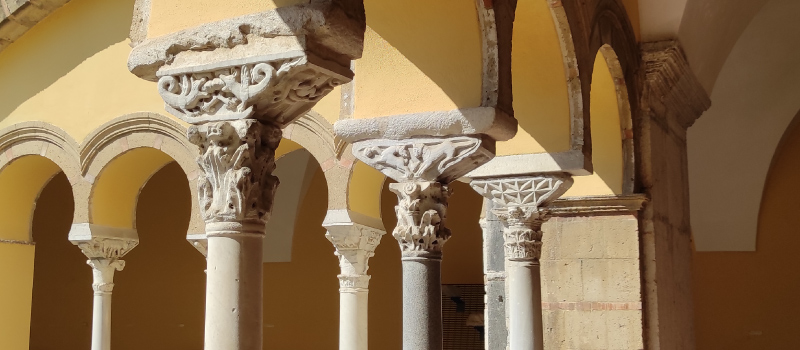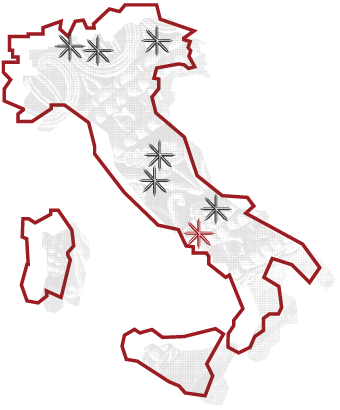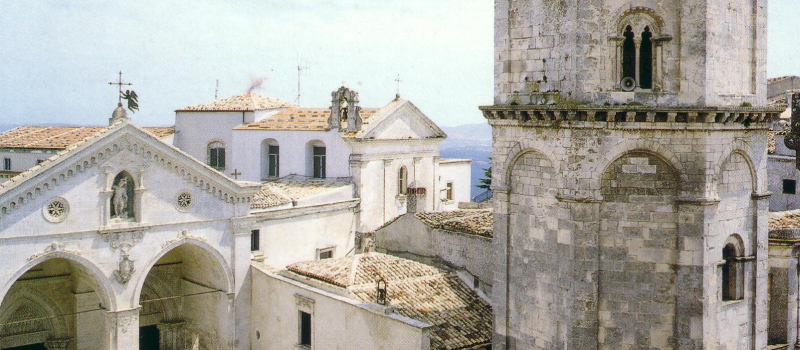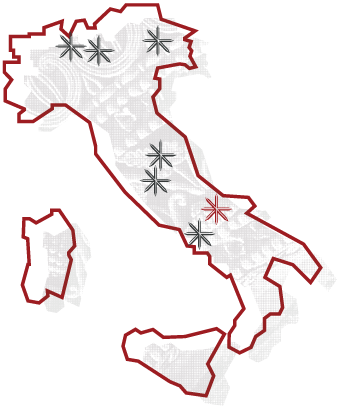The UNESCO site
A single site
for seven places
Longobards in Italy. Places of the Power (568-774 A.D.)” is the official name recorded on the UNESCO World Heritage List. The Serial Site is composed of 7 groups of monuments, located in Cividale del Friuli (Udine), Brescia, Castelseprio-Torba (Varese), Spoleto (Perugia), Campello sul Clitunno (Perugia), Benevento and Monte Sant’Angelo (Foggia).
They were designated a UNESCO World Heritage Site in June 2011 because they bear witness to the Lombard people’s significant role in Europe’s spiritual and cultural development during the transition from the Classical to Medieval periods.
Lombards in the World Heritage List
The Serial Site “Longobards in Italy. Places of the Power (568-774 A.D.)” includes the most important monumental Lombard remains present in the Italian peninsula, from north to south, in correspondence to the territories of the Lombard kingdom and duchies – which formed what has been called the ‘first Italian nation’.
After their arrival in Italy, the Lombards absorbed Roman traditions, Christian spirituality and Byzantine influences, integrating them with their traditional Germanic values and giving rise to a distinct new culture which reached its peak in the late 7th century and 8th century AD.
Recent historical studies have recognized the Lombard people as one of the main protagonists of the complex transition period between Antiquity and the Middle Ages. They initiated the cultural process (later inherited by Charlemagne) that transformed the ancient world and contributed to the emergence of medieval Europe, marking the next thousand years of Western history.
L’elenco dell’UNESCO sottolinea così l’importanza di quest’opera e mette a tacere le nozioni di “decadenza”, “fine della civiltà” e “barbarie” che furono spesso applicate al periodo compreso tra la caduta dei Romani e la nascita dei Carolingi impero, sottolineando invece la continuità del processo storico e la compenetrazione delle diverse civiltà.
L’inserimento del sito “I Longobardi in Italia. I luoghi del potere (568-774 d.C.)” è anche un riconoscimento dell’impegno dei numerosi enti pubblici e privati coinvolti a vario titolo nella gestione dei monumenti e delle aree circostanti , che lavorano insieme dal 2006 – e lo fanno ancora oggi – secondo i principi di complementarietà e collaborazione sanciti dalla Comunità Europea al fine di elevare costantemente il livello di sviluppo delle spoglie lombarde e diffonderne la conoscenza.
World Heritage List criteria
Vuoto
Your content goes here. Edit or remove this text inline or in the module Content settings. You can also style every aspect of this content in the module Design settings and even apply custom CSS to this text in the module Advanced settings.
Criterio II
The Lombard monuments are an excellent example of the cultural and artistic synthesis that occurred in Italy from the 6th to 8th centuries between Roman traditions, Christian spirituality, Byzantine influences and Germanic values, setting the scene for the development of Carolingian art and culture.
Criterio III
The sites of Lombard power express new and exceptional artistic and monumental forms that bear witness to the distinctive nature of Lombard culture in Early Medieval Europe. Together they constitute a unique and readily identifiable cultural series, whose differences in style and purpose express the power of various Lombard élites.
Criterio VI
The role of the Lombards in the transmission of Classical literary, technical, architectural, scientific, historical and legal works to early European culture was of fundamental importance.
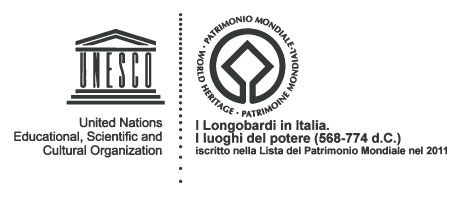
UNESCO,
specialized agency of the United Nations
UNESCO’s purpose is “to contribute to peace and security by promoting collaboration among nations through education, science and culture for a greater universal respect for justice, law, human rights and fundamental liberties, recognized by the United Nations Charter for all the peoples of the world, regardless of race, sex, language or religion”.
In 1972, UNESCO adopted the Convention Concerning the Protection of the World Cultural and Natural Heritage and established a World Heritage List of cultural and natural properties of “outstanding universal value”, i.e. sites chosen for their exceptional characteristics which make them the best existing examples of a particular type of heritage. The list therefore reflects the richness and diversity of the natural and cultural heritage of the entire world.
Under the Convention, countries recognize that sites inscribed on the World Heritage List located within their territory, without prejudice to national sovereignty or property rights, constitute world heritage “for the protection of which it is the duty of the international community as a whole to co-operate together”. The Convention is thus an agreement, ratified by almost all countries, which aims to guarantee the intellectual and financial resources necessary to safeguard the sites that belong to the World Heritage List.
Being a UNESCO site:
conservation and management
A document which clearly explains the methods of protection is attached to the site registration proposal: the Management Plan of the Serial Site “Longobards in Italy. Places of the Power (568 – 774 A.D.).
The Management Plan is a tool designed to guarantee the conservation over time of the exceptional values on which the site’s inscription in the UNESCO World Heritage List is based; it is a strategic and operational coordination document, which defines the objectives to be achieved and identifies the relative actions and implementation methods to be undertaken.
Vuoto
Your content goes here. Edit or remove this text inline or in the module Content settings. You can also style every aspect of this content in the module Design settings and even apply custom CSS to this text in the module Advanced settings.
Il Piano di Gestione del sito seriale
All partners must support the preservation of World Heritage through fundamental strategic goals, aiming to ensure a fair balance between conservation, sustainability, and development. This is so that the sites can be protected through appropriate activities that contribute to the socio-economic development and the quality of life of the associated communities.
Strategies can be implemented concerning communication, education, research, training, and awareness, seeking the active involvement of local entities at all levels in the protection and management of the World Heritage properties.

